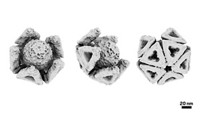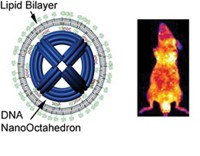Advertisement
Grab your lab coat. Let's get started
Welcome!
Welcome!
Create an account below to get 6 C&EN articles per month, receive newsletters and more - all free.
It seems this is your first time logging in online. Please enter the following information to continue.
As an ACS member you automatically get access to this site. All we need is few more details to create your reading experience.
Not you? Sign in with a different account.
Not you? Sign in with a different account.
ERROR 1
ERROR 1
ERROR 2
ERROR 2
ERROR 2
ERROR 2
ERROR 2
Password and Confirm password must match.
If you have an ACS member number, please enter it here so we can link this account to your membership. (optional)
ERROR 2
ACS values your privacy. By submitting your information, you are gaining access to C&EN and subscribing to our weekly newsletter. We use the information you provide to make your reading experience better, and we will never sell your data to third party members.
Materials
‘DNA slingshot’ targets drug delivery
Molecular machines built with synthetic DNA and antibodies could have applications in medicine
by Matt Davenport
May 22, 2017
| A version of this story appeared in
Volume 95, Issue 21

Gene therapy and personalized medicine are probably the first things that come to mind when people think about DNA and health care. But a growing number of researchers are viewing DNA as a functional and flexible material to build nanomachines with potential in medical diagnostics and drug delivery applications. The latest example is a “DNA slingshot” designed by researchers at the University of Montreal and the University of Rome Tor Vergata. Led by Rome’s Francesco Ricci, the researchers first created a DNA clamp from two synthetic DNA strands to encapsulate a third strand. The team conjugated antigenic peptides to the ends of the clamp strands, meaning every clamp is equipped to recognize specific antibodies. When two peptides find their target, the clamp strands elongate to span the familiar Y-shaped arms of the antibody. When the DNA clamp loosens, the interior strand is released like a wet noodle from a slingshot (Nat. Commun. 2017, DOI: 10.1038/ncomms15150). This DNA-based platform is inexpensive and is readily adaptable to accommodate peptides to recognize biomarkers specific to certain diseases, Ricci says. Although the slingshot shoots DNA currently, the team is working to load it with other molecules, including cancer therapeutics.





Join the conversation
Contact the reporter
Submit a Letter to the Editor for publication
Engage with us on Twitter